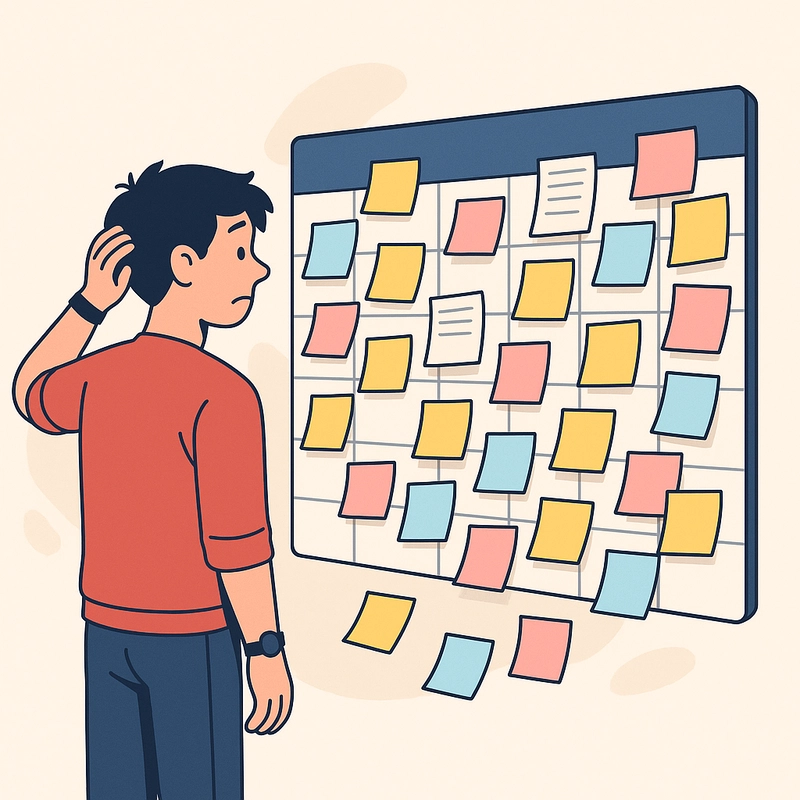🚨 Burnout in Tech: How to recognize it and build a sustainable career
Imagine this: your team has been delivering at a steady pace, but every quarter leadership drops in “just one more must-have feature.” Deadlines don’t shift, priorities aren’t clarified, and bandwidth conversations rarely happen. Nobody’s pulling all-nighters, but everyone feels drained.
After a while, motivation dips, standups get quieter, and you notice teammates joking about “just surviving the sprint.” That creeping exhaustion? That’s burnout. And it doesn’t always require long hours to set in—sometimes it’s born out of a system that’s constantly running beyond its sustainable limits.
💥 Why Burnout hits Tech professionals hard
Tech is exciting, creative, and rewarding—but it also has unique stressors that make burnout more likely:
🚧 Ignoring team bandwidth: Roadmaps often get stuffed without accounting for realistic capacity.
🔄 Context switching overload: Devs juggle bugs, incidents, features. PMs balance endless stakeholders. Designers handle multiple projects at once.
💭 Invisible emotional load: Being the “go-to person” or firefighting production issues takes a toll that doesn’t get tracked.
❓ Unclear priorities: When everything is “top priority,” nothing really is.
And the consequences? Beyond slower delivery and messy code, teams risk losing their best people. When talented engineers and PMs leave due to burnout, knowledge walks out the door 🚪, morale dips, and hiring gets even harder.
🕵️ The subtle signs of Burnout
Burnout creeps in quietly. Look out for these signals:
- 😐 Detachment: Work starts to feel meaningless.
- 🧗 Lower resilience: Small blockers feel like mountains.
- 😴 Persistent fatigue: Time off doesn’t recharge you.
- 🛑 Drop in creativity: You shift into survival mode instead of problem-solving.
- 🤐 Withdrawing socially: You talk less in meetings or avoid collaboration.
⚖️ The Bandwidth trap
On one project, my team kept getting “just one more” request on top of existing commitments. Each task seemed small, but together the load was unsustainable.
We pushed forward at first, but eventually velocity slipped, mistakes crept in, and retros got quieter. A teammate said, “It feels like no matter what I do, it’s never enough.”
The real issue wasn’t late nights—it was operating at max capacity without buffer. The fix was to reset expectations, carve out slack time in sprints, and be upfront about the cost of overcommitment.
🙅 When saying “No” isn’t enough
We often hear “Just say no.” But sometimes, even a well-delivered no doesn’t protect your team.
Our team has declined features due to a lack of bandwidth multiple times. But I remember one in particular where Leadership handed it to another team, and they delivered it quickly… but with shortcuts: hard-coded values, no tests, and duct-taped integrations. Months later, all that tech debt landed back on us.
We hadn’t escaped the work—we’d only delayed it, and multiplied the pain.
👉 Lesson: Saying no is a tool, but not a shield. Sometimes the real work is steering how things get done.
🛠️ Practical strategies to prevent (and recover from) Burnout
Here are tactics that actually work:
1- Respect bandwidth ⏳
- Don’t plan sprints at 100%.
- Use velocity data to push back on overloaded roadmaps.
- Normalize capacity conversations.
2- Clarify priorities 🎯
- Decide what’s must-have vs. stretch.
- Ask: “If we can only ship one thing, what should it be?”
- Make trade-offs visible.
3- Protect deep work 🔕
- Block no-meeting hours.
- Use async for status updates.
- Pair program or cross-train to spread knowledge.
4- Recharge proactively 🌱
- Take real breaks away from screens.
- Use vacation fully—leaders should model it.
- Invest in hobbies outside of tech.
5- Talk about it openly 🗣️
- Bring workload concerns into retros.
- Ask teammates how their workload feels.
- Reward sustainable delivery, not overwork.
🏢 What Leaders and Companies can do
Burnout is often systemic, not individual. Companies can:
- 📅 Plan realistically instead of normalizing crunch.
- 🕰️ Model balance (no midnight emails).
- 🎉 Celebrate sustainable wins—consistency, teamwork, and quality.
- 💡 Support mental health with flexible schedules and resources.
Ignoring burnout has a hidden cost: losing your most valuable people. And replacing them? That takes far more than fixing a roadmap.
✅ Quick takeaways
If you’re edging toward burnout, try these this week:
- Defer or drop one non-critical task.
- Block two hours of deep work time.
- Have a priority conversation with your manager.
- Ask yourself: Am I working sustainably or on borrowed energy?
🌟 Closing Thoughts: Build for the Long Game
A career in tech isn’t a sprint—it’s a marathon with lots of pivots. Burnout doesn’t always look like late nights; sometimes it looks like endless “just one more thing.”
When companies ignore bandwidth and well-being, they don’t just risk missed deadlines—they risk losing their brightest people ✨.
Respect your bandwidth. Protect your team. And remember: sustainable careers build sustainable products.
👉 Have you ever faced the “saying no wasn’t enough” trap? How did your team handle it? Share your story—I’d love to hear it.






